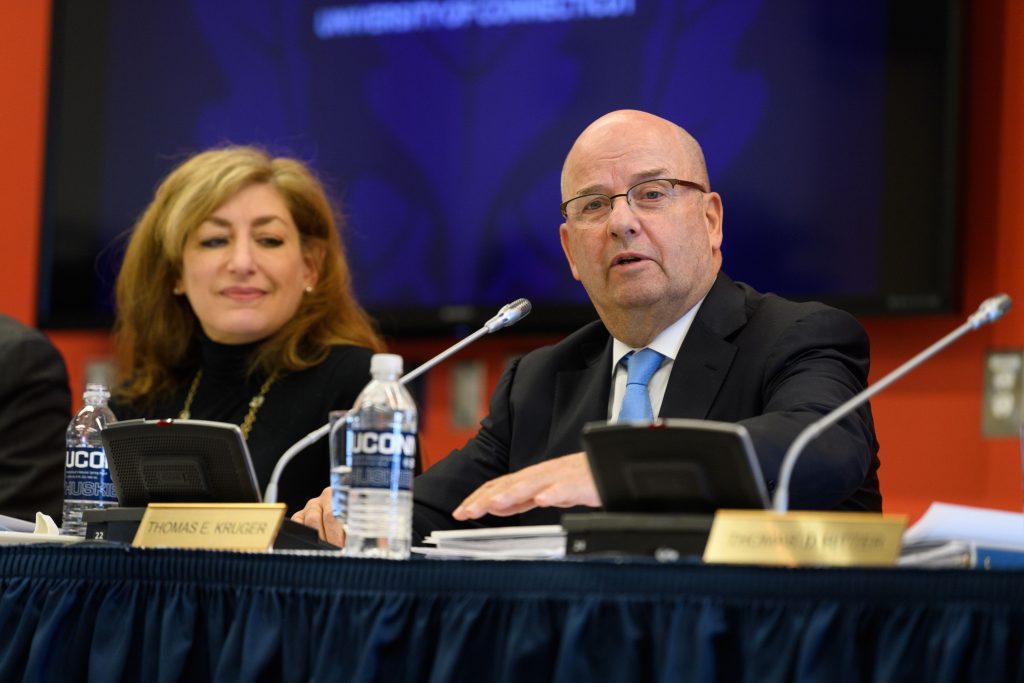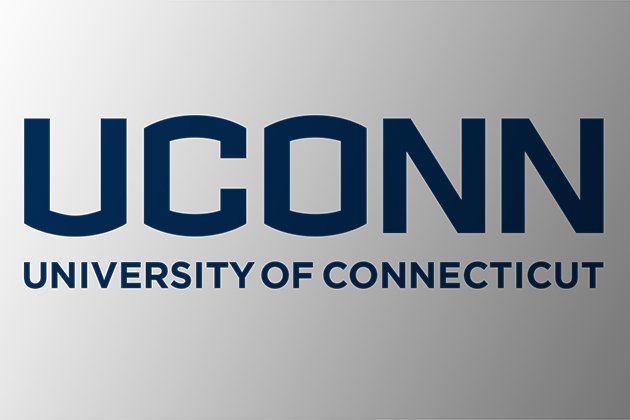
With the full scope of state budget cuts now in hand, UConn’s Board of Trustees on Wednesday updated the University’s spending plan for fiscal year 2018 to absorb millions in reductions, while looking ahead to an even tighter FY19 budget.
UConn had adopted baseline FY18 spending plans in June for the Storrs and regional campuses, and for UConn Health. Those provisional plans were used to carry the University into the new budget year starting July 1, while the Connecticut General Assembly worked out its new biennial spending plan, which includes yearly state block grants to help fund UConn operations.
The new state budget adopted in October includes nearly $143 million in cuts to UConn in the budget year that started July 1 and next year – not including another $21.4 million in cuts enacted in November to help balance this year’s state budget.
“This leaves the current appropriation to UConn at 2004 levels, despite inflation and significant growth in enrollment, faculty, and academic prominence,” said Scott Jordan, UConn’s executive vice president for administration and chief financial officer. “This two-year reduction to the University is dramatic, matching all previous reductions over the past seven fiscal years combined.”
UConn’s provisional FY18 budgets for Storrs, the regional campuses, and UConn Health were created in June with the best information available at that time. The new information allows the University to update the state allocation amount, fringe benefit expenses, and other factors that had not yet been settled at that time.
Despite the challenges and cuts, the updated FY18 budget for Storrs and the regional campuses is balanced and avoids deficits due to the tight rein that UConn has placed on spending, including a strategic hiring freeze, deferring and delaying some projects, and more than $25 million in cost-cutting measures across the board, Jordan said.
“This is something we anticipated; we didn’t anticipate it exactly to this level, but we were painfully aware of the budget situation that the state is in,” Jordan told trustees on Wednesday. “The plan we adopted last spring did include some room for adjustment, and management has been very active in making those adjustments during this fiscal year.”
The FY18 budget avoids raising tuition above the rate that had already been approved in the four-year plan that went into effect in fall 2016.
The spending plans equal $1.325 billion for Storrs and the regional campuses, and $1.089 billion for UConn Health.
The budget for Storrs and the regional campuses relies on tuition for 30 percent of its revenue, followed by about 24.7 percent of its revenue from the state’s operating allocation. As recently as the year 2000, state support comprised 43 percent of UConn’s revenue.
In fact, FY17 was the first year that tuition surpassed state support as the largest revenue source; that gap is forecast to keep growing significantly in the current fiscal year and in FY19, adding to UConn’s concerns that the cuts could impact affordability and access.
“UConn has carefully and effectively managed the budget despite deep cuts over the past few years,” Jordan said. “Looking forward, the University is facing troubling financial challenges and asks the state for stable funding.”
UConn has remained very strong in the academic realm, but University leaders say those successes are at risk due to the current fiscal climate and continual state budget cuts.
UConn has remained in the U.S. News & World Report’s Top 25 among public universities for the past several years and reached No. 18 this year, despite the funding cuts it has absorbed. Applications have also reached record highs for the past several years – including those from record-high numbers of valedictorians and salutatorians.
Interest in the new UConn Hartford campus and the new student housing at UConn Stamford is also strong; the number of class offerings has been increased by 33 percent in recent years; and the University graduated more students last May than ever before in its history.
While UConn absorbed the new state aid reductions for FY18 without eliminating major programs, Jordan warned that the state’s ongoing and mid-year cuts hurt the University’s ability to plan effectively to keep providing academic excellence, student support, excellent patient care, and advanced research.
“Continual significant cuts reduce the quality of the education that UConn is able to offer, and reduce the University’s ability to effectively contribute to the state and its economy,” he said.
Like other state agencies, UConn’s FY18 budget was significantly affected by the state’s agreement with that the State Employees Bargaining Agent Coalition (SEBAC) reached with the state to create savings. UConn included those provisions as tentative assumptions in the preliminary budget it approved in June, and kept them in the new document adopted Wednesday.
The SEBAC agreement increases employees’ share of health care and pension costs and includes three mandatory furlough days in FY18 for those covered by the deal, a three-year wage freeze, and other measures.
That pact also avoids layoffs through 2021 for current state employees, in addition to the other provisions on raises, co-pay and health care costs, and related items. This provision prevents UConn and other state agencies from achieving cost savings through personnel reductions.
In fact, the SEBAC pact includes raises in FY20, which will pose challenges for UConn unless the revenue picture changes in the near future, Jordan said Wednesday.
Andy F. Bessette, a UConn trustee and chairman of its financial affairs committee, said he was grateful to Jordan and his staff and others at the University who have helped it continue to move forward academically despite the financial challenges.
“The amount of work that goes into achieving these budgets is monumental,” Bessette said. “We have some hurdles ahead and Scott has outlined them well, but we’ll work through those and figure them out.”



